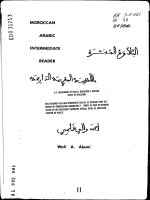Geo Alp Vol 005-0069-0081
Bạn đang xem bản rút gọn của tài liệu. Xem và tải ngay bản đầy đủ của tài liệu tại đây (1.1 MB, 13 trang )
��������������������������������������������������������������������������������������������������������������������������������������������������������������������������������������������������������������������������������������������������������������������������������������������������������������������������������������������������������������������������������������������������������������������������������������������������������������������������������������������������������������������������������������������������������������������������������������������������������������������������������������������������������������������������������������������������������������������������������������������������������������������������������������������������������������������������������������������������������������������������������������������������������������������������������������������������������������������������������������������������������������������������������������������������������������������������������������������������������������������������������������������������������������������������������������������������������������������������������������������������������������������������������������������������������������������������������������������������������������������������������������������������������������������������������������������������������������������������������������������������������������������������������������������������������������������������������������������������������������������������������������������������������������������������������������������������������������������������������������������������������������������������������������������������������������������������������������������������������������������������������������������������������������������������������������������������������������������������������������������������������������������������������������������������������������������������������������������������������������������������������������������������������������������������������������������������������������������������������������������������������������������������������������������������������������������������������������������������������������������������������������������������������������������������������������������������������������������������������������������������������������������������������������������������������������������������������������������������������������������������������������������������������������������������������������������������������������������������������������������������������������������������������������������������������������������������������������������������������������������������������������������������������������������������������������������������������������������������������������������������������������������������������������������������������������������������������������������������������������������������������������������������������������������������������������������������������������������������������������������������������������������������������������������������������������������������������������������������������������������������������������������������������������������������������������������������������������������������������������������������������������������������������������������������������������������������������������������������������������������������������������������������������������������������������������������������������������������������������������������������������������������������������������������������������������������������������������������������������������������������������������������������������������������������������������������������������������������������������������������������������������������������������������������������������������������������������������������������������������������������������������������������������������������������������������������������������������������������������������������������������������������������������������������������������������������������������������������������������������������������������������������������������������������������������������������������������������������������������������������������������������������������������������������������������������������������������������������������������������������������������������������������������������������������������������������������������������������������������������������������������������������������������������������������������������������������������������������������������������������������������������������������������������������������������������������������������������������������������������������������������������������������������������������������������������������������������������������������������������������������������������������������������������������������������������������������������������������������������������������������������������������������������������������������������������������������������������������������������������������������������������������������������������������������������������������������������������������������������������������������������������������������������������������������������������������������������������������������������������������������������������������������������������������������������������������������������������������������������������������������������������������������������������������������������������������������������������������������������������������������������������������������������������������������������������������������������������������������������������������������������������������������������������������������������������������������������������������������������������������������������������������������������������������������������������������������������������������������������������������������������������������������������������������������������������������������������������������������������������������������������������������������������������������������������������������������������������������������������������������������������������������������������������������������������������������������������������������������������������������������������������������������������������������������������������������������������������������������������������������������������������������������������������������������������������������������������������������������������������������������������������������������������������������������������������������������������������������������������������������������������������������������������������������������������������������������������������������������������������������������������������������������������������������������������������������������������������������������������������������������������������������������������������������������������������������������������������������������������������������������������������������������������������������������������������������������������������������������������������������������������������������������������������������������������������������������������������������������������������������������������������������������������������������������������������������������������������������������������������������������������������������������������������������������������������������������������������������������������������������������������������������������������������������������������������������������������������������������������������������������������������������������������������������������������������������������������������������������������������������������������������������������������������������������������������������������������������������������������������������������������������������������������������������������������������������������������������������������������������������������������������������������������������������������������������������������������������������������������������������������������������������������������������������������������������������������������������������������������������������������������������������������������������������������������������������������������������������������������������������������������������������������������������������������������������������������������������������������������������������������������������������������������������������������������������������������������������������������������������������������������������������������������������������������������������������������������������������������������������������������������������������������������������������������������������������������������������������������������������������������������������������������������������������������������������������������������������������������������������������������������������������������������������������������������������������������������������������������������������������������������������������������������������������������������������������������������������������������������������������������������������������������������������������������������������������������������������������������������������������������������������������������������������������������������������������������������������������������������������������������������������������������������������������������������������������������������������������������������������������������������������������������������������������������������������������������������������������������������������������������������������������������������������������������������������������������������������������������������������������������������������������������������������������������������������������������������������������������������������������������������������������������������������������������������������������������������������������������������������������������������������������������������������������������������������������������������������������������������������������������������������������������������������������������������������������������������������������������������������������������������������������������������������������������������������������������������������������������������������������������������������������������������������������������������������������������������������������������������������������������������������������������������������������������������������������������������������������������������������������������������������������������������������������������������������������������������������������������������������������������������������������������������������������������������������������������������������������������������������������������������������������������������������������������������������������������������������������������������������������������������������������������������������������������������������������������������������������������������������������������������������������������������������������������������������������������������������������������������������������������������������������������������������������������������������������������������������������������������������������������������������������������������������������������������������������������������������������������������������������������������������������������������������������������������������������������������������������������������������������������������������������������������������������������������������������������������������������������������������������������������������������������������������������������������������������������������������������������������������������������������������������������������������������������������������������������������������������������������������������������������������������������������������������������������������������������������������������������������������������������������������������������������������������������������������������������������������������������������������������������������������������������������������������������������������������������������������������������������������������������������������������������������������������������������������������������������������������������������������������������������������������������������������������������������������������������������������������������������������������������������������������������������������������������������������������������������������������������������������������������������������������������������������������������������������������������������������������������������������������������������������������������������������������������������������������������������������������������������������������������������������������������������������������������������������������������������������������������������������������������������������������������������������������������������������������������������������������������������������������������������������������������������������������������������������������������������������������������������������������������������������������������������������������������������������������������������������������������������������������������������������������������������������������������������������������������������������������������������������������������������������������������������������������������������������������������������������������������������������������������������������������������������������������������������������������������������������������������������������������������������������������������������������������������������������������������������������������������������������������������������������������������������������������������������������������������������������������������������������������������������������������������������������������������������������������������������������������������������������������������������������������������������������������������������������������������������������������������������������������������������������������������������������������������������������������������������������������������������������������������������������������������������������������������������������������������������������������������������������������������������������������������������������������������������������������������������������������������������������������������������������������������������������������������������������������������������������������������������������������������������������������������������������������������������������������������������������������������������������������������������������������������������������������������������������������������������������������������������������������������������������������������������������������������������������������������������������������������������������������������������������������������������������������������������������������������������������������������������������������������������������������������������������������������������������������������������������������������������������������������������������������������������������������������������������������������������������������������������������������������������������������������������������������������������������������������������������������������������������������������������������������������������������������������������������������������������������������������������������������������������������������������������������������������������������������������������������������������������������������������������������������������������������������������������������������������������������������������������������������������������������������������������������������������������������������������������������������������������������������������������������������������������������������������������������������������������������������������������������������������������������������������������������������������������������������������������������������������������������������������������������������������������������������������������������������������������������������������������������������������������������������������������������������������������������������������������������������������������������������������������������������������������������������������������������������������������������������������������������������������������������������������������������������������������������������������������������������������������������������������������������������������������������������������������������������������������������������������������������������������������������������������������������������������������������������������������������������������������������������������������������������������������������������������������������������������������������������������������������������������������������������������������������������������������������������������������������������������������������������������������������������������������������������������������������������������������������������������������������������������������������������������������������������������������������������������������������������������������������������������������������������������������������������������������������������������������������������������������������������������������������������������������������������������������������������������������������������������������������������������������������������������������������������������������������������������������������������������������������������������������������������������������������������������������������������������������������������������������������������������������������������������������������������������������������������������������������������������������������������������������������������������������������������������������������������������������������������������������������������������������������������������������������������������������������������������������������������������������������������������������������������������������������������������������������������������������������������������������������������������������������������������������������������������������������������������������������������������������������������������������������������������������������������������������������������������������������������������������������������������������������������������������������������������������������������������������������������������������������������������������������������������������������������������������������������������������������������������������������������������������������������������������������������������������������������������������������������������������������������������������������������������������������������������������������������������������������������������������������������������������������������������������������������������������������������������������������������������������������������������������������������������������������������������������������������������������������������������������������������������������������������������������������������������������������������������������������������������������������������������������������������������������������������������������������������������������������������������������������������������������������������������������������������������������������������������������������������������������������������������������������������������������������������������������������������������������������������������������������������������������������������������������������������������������������������������������������������������������������������������������������������������������������������������������������������������������������������������������������������������������������������������������������������������������������������������������������������������������������������������������������������������������������������������������������������������������������������������������������������������������������������������������������������������������������������������������productive organ can be attributed to
Phylladelphia strigata. They differ from the leaves of
Sanmiguelia however in being considerably smaller
and having a different shape. Moreover, in
Sanmiguelia the longitudinal ribs are parallel to the
margin, arising near the leaf base and merging at
Geo.Alp, Vol. 5, 2008
the apex. They show, therefore, a higher concentration at the apex and base than in the central part of
the leaf (Tidwell et al., 1977). In Phylladelphia the
longitudinal ribs (costae) are parallel to the symmetry axis (or mid vein) and independent from the leaf
margin. Additionally, Phylladelphia strigata does not
show any clear secondary vein structure. The wrinkles, observed in some specimens, originate probably from desiccation of the leaf or are caused by the
thickness of the leaf substance, and are not due to
transversal secondary veins, evidenced also by their
appearance and disappearance independently from
the margin.
Another slightly comparable Triassic taxon is the
conifer genus Pelourdea. Pelourdea-like leaves are
well known from the Carnian flora of Raibl (labeled
often as Noeggerathia vogesiacus) but are easily
distinguishable from Phylladelphia because of the
different shape (spatulate to tongue-shaped against
lanceolate for Pelourdea) and size (96 mm x max. 44
mm against at least 260 x 30 mm) of the leaves and
the absence of ribs (costae). In Pelourdea no costae
have been found but veins with a frequency of up
to 12/cm (in the middle part of the leaf).
An interesting feature for Phylladelphia is the
bilaterally symmetry of each leaf, together with the
furrow (?midvein) running along the entire leaf
indicating that the leaves were probably closed at
some point of the life of the plant (in the juvenile
stage? See Pl. 2, Fig. 4). This feature has not been
observed so far in any Triassic plant.
A concrete attribution of Phylladelphia to any
botanical group is not possible, until better preserved specimens are collected or fertile structures
can be attributed to these leaves.
Acknowledgements
We wish to thank Alexander Luckeneder and
Andreas Kroh (Naturhistorisches Museum Wien) for
the help during the study of the Raibl flora. Irene
Zorn and Barbara Meller (Austrian Geological
Survey) not only made the Raibl flora available but
helped also in the understanding of the history of
the Raibl specimens and with the research of the old
bibliography. Menno Booi took the picture of the
specimen at National History Museum “Naturalis” in
Leiden (NL). The manuscript was greatly improved
by the constructive remarks and considerations
from Barbara Meller (Austrian Geological Survey).
Geo.Alp, Vol. 5, 2008
The project “Taxonomic revision of the Carnian
(Upper Triassic) conifers from the historical Raibl
flora from Northern Italy “ (AT-TAF-2999) received
funding through SYNTHESYS, which is made available by the European Community - Research
Infrastructure Action under the FP6 „Structuring
the European Research Area“ Programme.
References
Allasinaz, A. (1966): Il Trias in Lombardia XVIII. La fauna a
Lamellibranchi dello Julico (Carnico medio). Rivista
Italiana di Paleontologia e Stratigrafia, 72: 609–752.
Arber, E.A.N. (1907): On Triassic species of the genera
Zamites and Pterophyllum types of fronds belonging
to the Cycadophyta. The Transactions of the Linnean
Society of London 7(7): 109–127.
Bronn, H.G. (1858): Beiträge zur Triasischen Fauna und
Flora der bituminösen Schiefer von Raibl, nebst
Anhang über die Kurr’sche Sippe Chiropteris aus dem
Lettenkohlen-Sandsteine. 63 pp., E. Schweitzerbart’sche Verlagshandlung und Druckerei, Stuttgart.
Brown, R.W. (1956): Palmlike plants from the Dolores
Formation (Triassic) in southwestern Colorado. U.S.
Geol. Surv. Prof. Paper, 274: 205–209.
Cornet, B. (1989): The reproductive morphology and biology of Sanmiguella lewisii, and its bearing on
angiosperm evolution in the Late Triassic. Evolutionary
trends in Plants, 3(1): 25–51.
Dalla Vecchia, F.M. (2000): Macrovegetali terrestri nel
Mesozoico Italiano: un’ulteriore evidenza di frequenti
emersioni. Natura Nascosta, 20: 18–35.
Dobruskina, I.A. (1994): Triassic Floras of Eurasia. 422 pp.,
Springer Verlag, Wien.
Dobruskina, I.A., Jurkovsek, B., Kolar Jurkovsek, T. (2001):
Upper Triassic Flora from „Raibl beds“ of Julian Alps
(Italy) in Karavanke Mts. (Slovenia). Geologija, 44(2):
263-290.
Kner, R. (1866): Die Fische der bituminosen Schiefer von
Raibl in Kärnthen. Sitzungsbericht der Akademie der
Wissenschaften Wien, 53: 152–197.
Kustatscher, E., Van Konijnenburg-Van Cittert, J.H.A.
(2007): Taxonomical and palaeogeographic considerations on the seedfern genus Ptilozamites. Neues
Jahrbuch der Geologie und Paläontologie, 243(1):
71–100.
Passoni, L., Van Konijnenburg-Van Cittert, J.H.A. (2003):
New taxa of fossil Carnian plants from Mount Pora
(Bergamasc Alps, Northern Italy). Review of
Paleobotany and Palynology 123: 321–346.
75
Roghi, G. (2004): Palynological investigations in the
Carnian of Cave del Predil area (once Raibl, Julian Alps).
Review of Palaebotany and Palynology, 132: 1–35.
Roghi, G., Kustatscher, E. van Konijnenburg-van Cittert,
J.H.A. (2006): Late Triassic Plant from Julian Alps
(Italy). Bollettino della Società Paleontologica Italiana,
45 (1): 133-140.
Schenk, A. (1866-7): Über die Flora der schwarzen
Schiefer von Raibl. Würzburger naturwissenschaftliche Zeitschrift, 6:10-20.
Stur, D. (1868): Beiträge zur Kenntnis der geologischen
Verhältnisse der Umgebung von Raibl und Kaltwasser.
Jahrbuch der Geologischen Reichsanstalt, 18: 71-122.
Stur, D. (1885): Die obertriadische Flora der LunzerSchichten und des bituminösen Schiefers von Raibl.
Sitzungsbericht der Kaiserlichen Akademie der Wis senschaften Wien, Mathematisch-Naturwissenschaftliche Klasse, Abt. 1, 88(1): 93-103.
Taylor, T.N., Taylor, E. J., (1993): The Biology and Evolution
of plants. 982 pp., Prentice-Hall Inc., Englewood Cliffs,
New Jersey (USA).
Tidwell, W.D., Simper, A.D., Thayn, G.F. (1977): Additional
information concerning the controversial Triassic
plant: Sanmiguelia. Palaeontographica, Abt. B, 163:
143-151.
Manuscript submitted: February 21, 2008
Revised manuscript accepted: March 31, 2008
Plate 1 (scale = 10 mm if not otherwise indicated)
1. Historical label from a specimen at the Museum of Natural History of Vienna (NHM 1866 XL 464).
2. Historical label from a specimen at the Geological Survey of Vienna (GBA 2007/072/0019).
3. Historical label (between 1939 and 1945) from a specimen at the Geological Survey of Vienna (2007/072/0013A).
4. Almost complete leaf of Phylladelphia strigata Bronn (GBA 2007/072/0051).
5. Complete leaf of Phylladelphia strigata Bronn, neotype (GBA 2007/072/0013A).
6. Complete leaf of Phylladelphia strigata Bronn, counterpart of the neotype (GBA 2007/072/0013B)
7. Basal leaf fragment of Phylladelphia strigata Bronn (GBA 1986/2/111).
8. Apical leaf fragment of Phylladelphia strigata Bronn showing the ribs (GBA 2007/072/0088).
76
Geo.Alp, Vol. 5, 2008
Geo.Alp, Vol. 5, 2008
77
Plate 2 (scale = 10 mm if not otherwise indicated)
1. Several basal leaf fragments of Phylladelphia strigata Bronn partially covering each other (GBA 1986/2/120).
2. Basal leaf fragment of Phylladelphia strigata Bronn with marked ribs and distinct midrib (GBA 1986/2/101).
3. Detail of the counterpart of Fig. 2 (GBA 1986/2/101), showing the midrib and the small trasversal wrinkles (NHM
1866 XL 465) (scale = 5 mm).
4. Putative young leaf of Phylladelphia strigata Bronn (GBA 2007/072/0019).
5. Specimen with distinct ribs (Leiden THDP 4628).
78
Geo.Alp, Vol. 5, 2008
Geo.Alp, Vol. 5, 2008
79
Plate 3
1. Original figure of Phylladelphia strigata in Bronn (1858), pl. VII, fig. 2.
2. Fragmentary apical leaf fragment of Phylladelphia strigata Bronn with marginal wrinkles (NHM 1866 XL 464)
3. Specimen showing three apical leaf fragments and resembling Bronn’s pl. VII, fig. 2 (see Pl. 3, Fig. 1) (GBA 2007-0720044).
80
Geo.Alp, Vol. 5, 2008
Geo.Alp, Vol. 5, 2008
81









